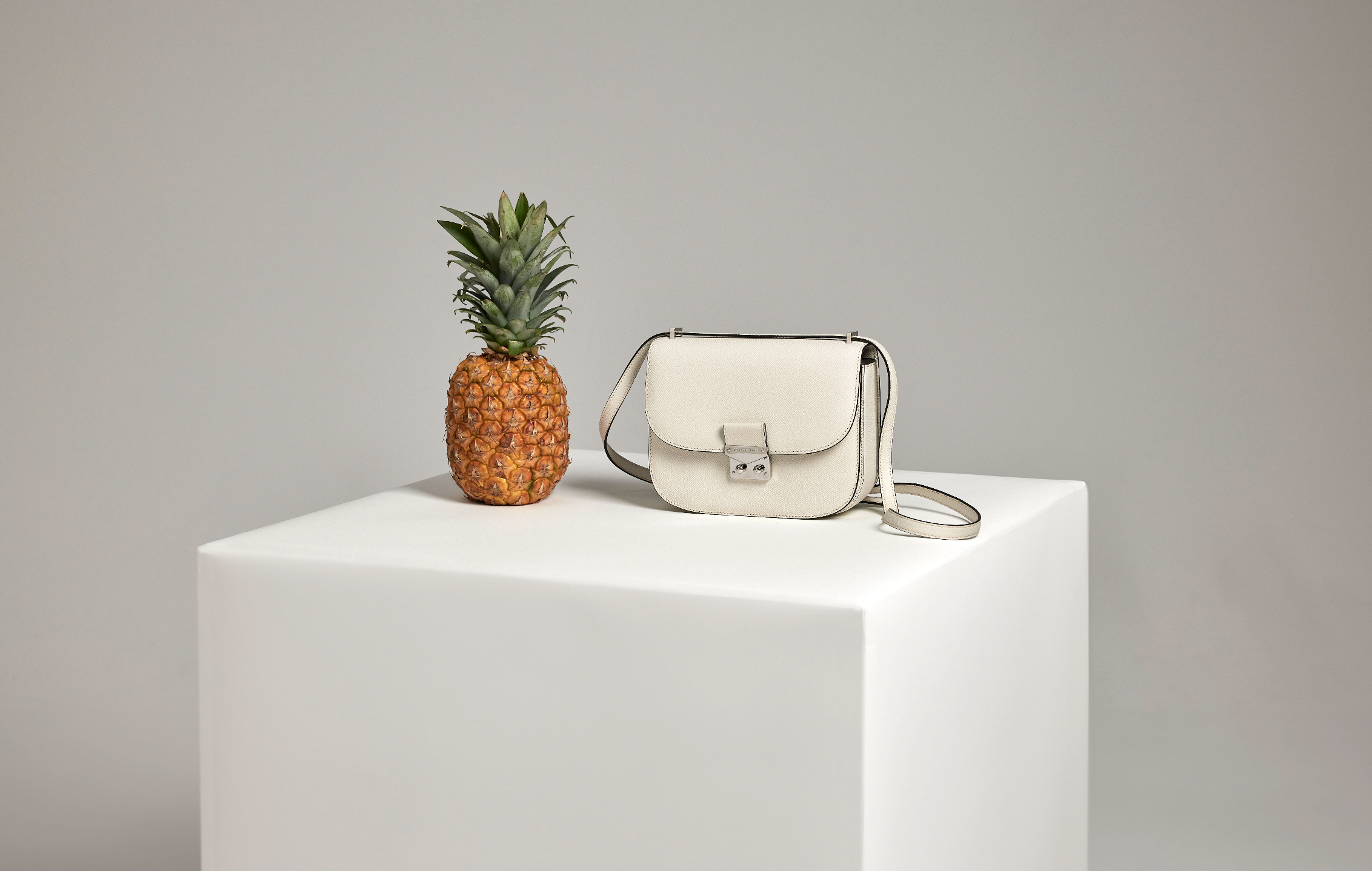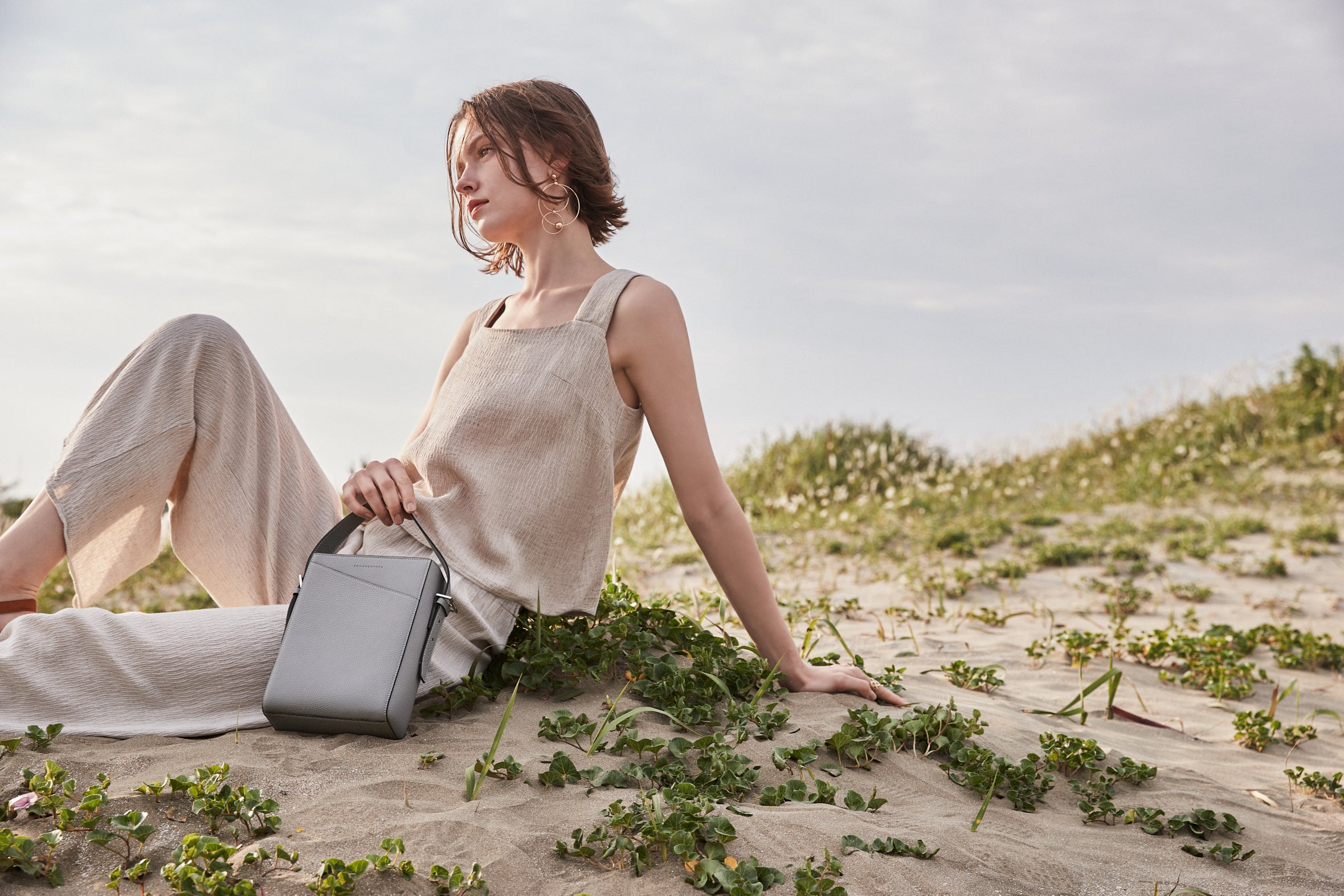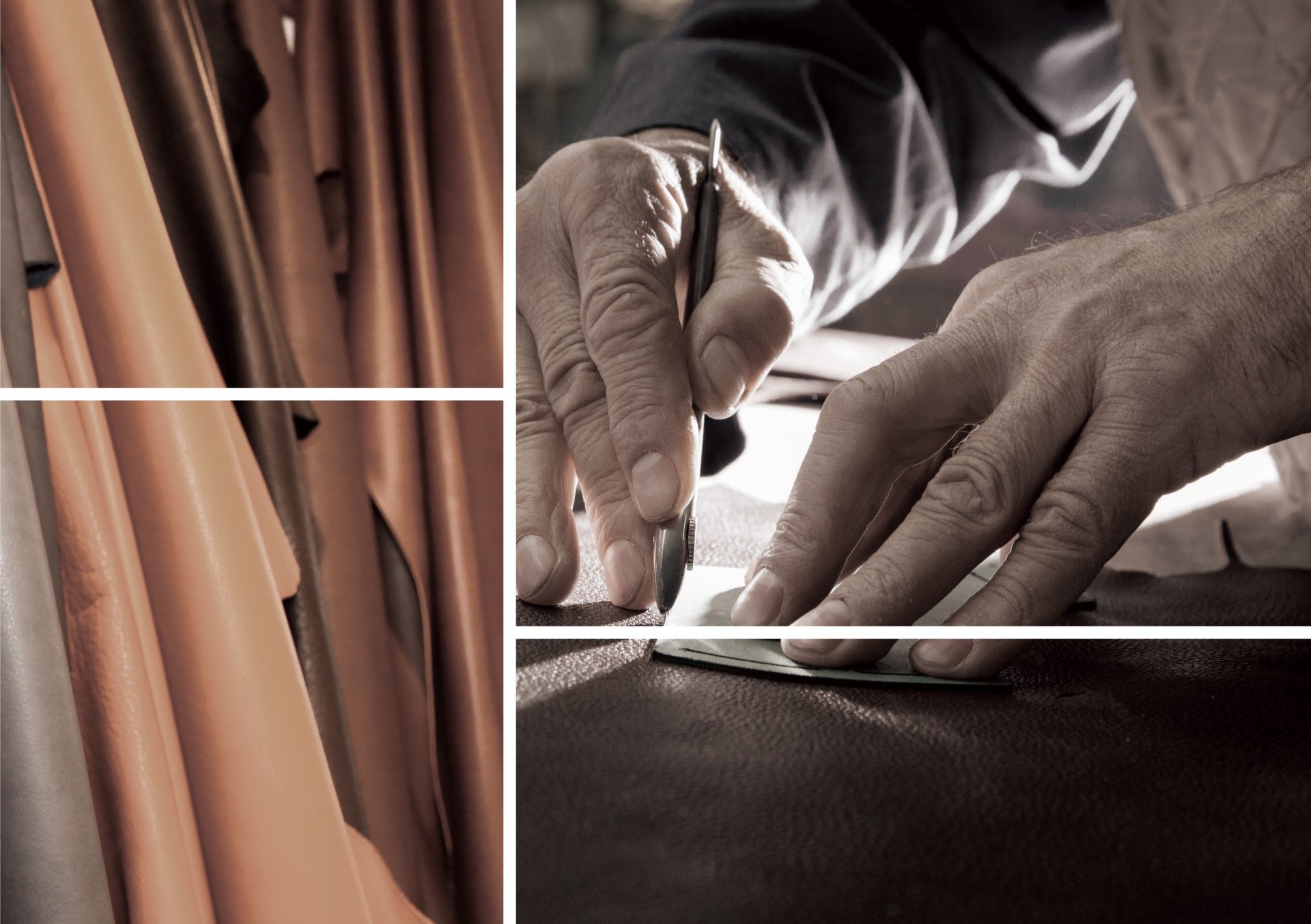The comparison between vegan leather and full-grain leather is not only a topic of aesthetic relevance, but also raises important questions about sustainability, quality and ethics in the leather industry. At a time when consumers are increasingly concerned about the origin and environmental impact of their products, these two materials are at the center of the debate. Vegan leather, often hailed as an eco-friendly alternative, and full-grain leather, known for its robustness and durability, represent different philosophical and practical approaches in the world of fashion. This article, presented by BONAVENTURA, a pioneer in the use of high-quality full-grain leather, aims to compare in detail the characteristics, advantages and disadvantages of both types of leather and thus provide an informed basis for your purchasing decision.

Table of contents:
- Understanding full-grain leather
- What is vegan leather?
- Quality and durability
- Sustainability of leather
- Design options
- Transparency and responsibility
- Critical view
- Concluding thoughts
What is full-grain leather?
Full-grain leather is considered the highest quality leather available on the market. It is the top layer of the animal hide that contains all the natural grain and irregularities. These characteristics not only give the leather a unique appearance, but also contribute to its exceptional durability and ability to develop an attractive patina over time. BONAVENTURA uses two special types of leather for its premium leather products Full-grain leather: Fjord and Noblessa.
Fjord is a shrunken, grained calfskin that is characterized by a soft but robust texture. It is particularly resistant to wear and tear and is ideal for everyday use. Noblessa, on the other hand, is an embossed calfskin with a characteristic cross grain that not only offers a refined look, but also exceptional resistance to scratches and knocks. These carefully selected types of leather reflect BONAVENTURA's philosophy, in which quality and design are paramount. By using these noble materials, each product becomes a symbol of longevity and timeless style.

The reality of vegan leather
Vegan leather is often touted as an environmentally friendly alternative to traditional leather, but a closer look reveals a different reality. In fact, vegan leather is largely made from plastics such as polyurethane (PU) or polyvinyl chloride (PVC), which are treated with various additives to create a leather-like texture. Although these materials are free from animal products, their production and disposal have a significant environmental impact. The production of artificial leather requires the use of fossil fuels and can lead to non-degradable waste that pollutes the environment when disposed of.
The marketing strategies that present vegan leather as a sustainable option deserve critical consideration. While avoiding animal products may be a laudable goal in itself, the environmental credibility of these alternatives should not be taken lightly. Consumers are increasingly being asked to question the full environmental impact of the products they buy - including the resources needed to produce them and the long-term consequences of their disposal.
A comparison of quality and durability
The superiority of full-grain leather in terms of durability and aesthetics is undisputed. This natural material is not only extremely hard-wearing, but also develops an attractive patina that gains character over the years. Unlike vegan leather alternatives, which often show signs of wear and tear quickly, full-grain leather offers a long-lasting quality that makes it ideal for high-quality leather goods. These properties are reflected in the Lifetime warranty that BONAVENTURA offers for its leather products.
An excellent example of the quality and durability of BONAVENTURA leather goods is the Paolo crossbody bag made from high-quality fjord leather. This bag is not only a testament to the craftsmanship and design that BONAVENTURA is all about, but also proof that style and functionality can go hand in hand. By using fjord leather, BONAVENTURA ensures that the bag not only looks appealing today, but will continue to make an impressive appearance for many years to come.
Leather and sustainability
The manufacturing processes of full-grain leather and vegan leather differ significantly in their ecological footprints. While the production of full-grain leather utilizes a significant resource in the form of animal hide, the processes are designed to use it as efficiently and sustainably as possible. This includes methods such as the use of less harmful tanning agents and the implementation of recycling processes for water and material waste. In contrast, the production of vegan leather is often based on petrochemical products, which can have a significant environmental impact, from raw material extraction to disposal.
A decisive aspect that Sustainability of full-grain leather products The company's lifetime guarantee underlines BONAVENTURA's commitment to sustainability. This guarantee is not only a sign of confidence in the quality and longevity of the products, but also reflects the company's commitment to sustainability. The promise of a long service life reduces the need to replace products frequently, which ultimately helps to reduce waste and resource consumption.

Aesthetics and design options
The design flexibility of full grain leather is second to none, and its natural texture provides an ideal foundation for creating both classic and modern designs. Full grain leather takes color very well and allows for a wide range of finishes that make each product unique. This material is popular not only for its aesthetic qualities, but also for its ability to become more beautiful with time. It develops a patina that gives each piece an individual character.
BONAVENTURA uses these properties of full-grain leather to create elegant and durable designs. The combination of craftsmanship and contemporary design results in products that are both stylish and functional. BONAVENTURA leather goods are designed to increase in beauty and value over the years, making them an excellent investment in any discerning customer's wardrobe.
Responsibility and transparency
Transparency and ethical responsibility are fundamental pillars in the modern fashion industry. Consumers are increasingly demanding insight into the production processes of the goods they buy, and are demanding that they are produced under fair and environmentally friendly conditions. For companies, this means not only being accountable for their supply chains, but also actively working to improve working conditions and reduce their environmental footprint.
BONAVENTURA has taken up this challenge and sets high standards for social and ecological responsibility. Openness towards customers about the origin of the materials and production methods is an essential part of the brand identity. By adhering to strict guidelines and regularly auditing its suppliers, the company ensures that all products are not only of the highest quality, but are also manufactured in an ethically sound manner.

Critical view by consumers
In an increasingly networked world where information is quickly and widely available, it is more important than ever for consumers to critically scrutinize products and the conditions under which they are manufactured. Responsible consumption means being aware of the impact of your purchasing decisions, be it in terms of the environment, working conditions or product quality. It is about thinking outside the box and evaluating not only the price and appearance of a product, but also its entire life cycle.
Shoppers can make their purchasing decisions responsibly by choosing brands that promote transparency and sustainability. It is advisable to support companies that disclose their supply chains, guarantee fair working conditions and actively take environmental measures. By asking specific questions and using available research resources, consumers can identify brands that are not only convincing in word but also in deed.
Conclusion
The discussion about full-grain and vegan leather highlights fundamental differences in terms of quality, durability and environmental impact. Full-grain leather stands out for its outstanding durability and ability to develop a beautiful patina that aesthetically enhances the product for years to come. In contrast, vegan leather often focuses on its short-lived nature and the environmental concerns raised by the use of synthetics.
In conclusion, it can be said that quality and ethical consumption are closely linked in the fashion industry. Responsible consumers are increasingly being encouraged to consider not only aesthetic and functional aspects, but also the origin and manufacturing conditions of products. Companies such as BONAVENTURA which are characterized by transparency, high quality standards and ethical responsibility, set important benchmarks in the industry. This commitment to sustainability and quality not only ensures customer satisfaction, but also contributes to positive change in the fashion industry in the long term.








